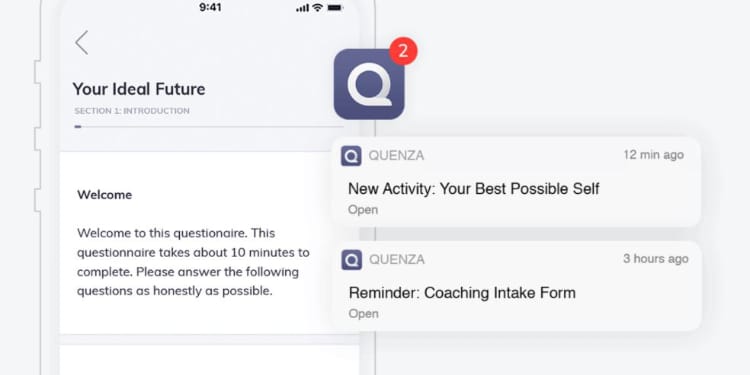










Online therapy has become a mainstream option in the mental health landscape. Over time, it has proven to be a convenient and cost-effective alternative to traditional in-office therapy. While it’s utilized by users from diverse demographic groups, online therapy seems to be exceptionally appealing to adolescents.

While teenage angst is not uncommon, most teens get through these years just fine. However, when that angst doesn’t get better, symptoms of depression and anxiety can persist, affecting the teen’s daily functioning, social and family relationships, schoolwork, sleep and appetite, and more.
The most recent surveys have found that about one in five, or 20%, of teens, experience significant mental health issues, with the average age of onset about 14 years old.
Depression, the most common mental health issue experienced by teens, affects approximately 15% of adolescents, and the numbers are on the rise.
Adolescents are historically not the easiest clients to engage in sessions. They are often resistant, aloof, or otherwise unimpressed with traditional talk therapy approaches. If you’re working with an adolescent, you have to work hard to gain their trust and speak their language. Online therapy taps into their world in ways routine talk often cannot. For teens, the world revolves around technology. It’s a space they know well and operate in every day in some capacity. Online therapy with adolescents feels like a perfect fit.
The idea of providing healthcare remotely first emerged in the late 1800s as telephones became more common. Using the technology of the day for mental health care began in the late 1950s when psychiatrists at the University of Nebraska used two-way closed-circuit television to provide consultation for patients and training for students between the Nebraska Psychiatric Institute and Norfolk State Hospital in Nebraska.
Over the following years, online mental health services continued to grow. Research has followed and online therapy has proven to be an effective alternative or adjunct to, in-person therapy. Using the latest teleconferencing technology, online therapy is now considered part of mainstream mental health care.
Teens are hooked on technology unlike other demographics, and it has become their primary mode of social connection. Research has uncovered that over 85% of teens own a smartphone. Watching videos, gaming, and social media dominate their time spent online. It’s where they are and how they communicate. And communication in the virtual space requires a different way of interacting. There is less reliance on non-verbal cues and more on emojis, acronyms, and 280-character limits…a kind of virtual shorthand.
It hasn’t gone unnoticed that more and more kids born in the smartphone era seem to have lost some of their ability to engage socially in non-tech situations. They often appear uncomfortable and struggle with conversation. Teens and heavy tech users seem to struggle the most. Studies with teens have found that face-to-face social interactions tend to elicit feelings of discomfort or social anxiety. The level of social anxiety experienced seems to be associated with the amount of time using technology.
Teens tend to be quite standoffish when it comes to therapy. About 80% of teens who need treatment don’t get it for various reasons. Some teens embrace therapy but most of them have genuine concerns. A therapist’s office, no matter how inviting, can feel uncomfortable or even intimidating.
Teens tend to have a preference for self-reliance or, at least, not taking help from grownups. They report concerns about confidentiality, or being stigmatized or judged in some way for needing help. It’s no wonder their first response is to avoid it.
For teens, it’s hard to accept help. It’s harder when they’ve been mandated by the court or brought (they often use the word “forced”) into therapy by their parents. This flies right in the face of their developmental progression and sets up quite a battleground.
During the adolescent developmental period, teens are struggling with identity vs. role confusion. Essentially, they are trying to determine who they are and how they want their lives to be. Independence is the end game and they begin the process of pushing away from parents and others in authority.
However mature they may seem on the outside, they are still adolescents with a lot of learning and growing to do. Even their brains are still growing. The pre-frontal cortex, the part of the brain responsible for emotional regulation and decision-making, will not fully mature until early adulthood. So, the resistance also comes from their drive for independence and the short-sightedness of adolescence.
For teens who are resistant, uncomfortable, or just curious, online therapy can be an effective and familiar alternative to traditional in-person counseling. Online therapy can help teens feel in control and turn, coming to therapy on their terms. By utilizing digital technologies, the therapist can meet adolescent clients where they are and in a space in which they feel comfortable and safe.
Online therapy is effective for several mental health issues, typically depression, anxiety, and substance-related disorders. Some disorders, such as eating disorders, may also have significant medical co-morbidity that requires closer monitoring than online therapy will allow.
Such disorders may not preclude the use of online therapy but may require some combination of in-person and online. Those are decisions you would make with your therapist. While not every person or situation is appropriate for online therapy, many are.
As noted above, depression affects about one in eight teens. Online therapy is an effective intervention for treating depression in teens. One approach in particular, internet-based cognitive behavioral therapy, has demonstrated significant positive impacts on symptoms of depression and anxiety in teens.
Anxiety disorders are the most common mental health disorders seen in adolescence, with about 5-12% of teens being affected. While it is transient for many teens, for others it can become more pervasive. Left untreated, it can have long-reaching impacts on functioning and symptoms can become chronic and severe. CBT has been a staple in treating anxiety disorders of all kinds. Online CBT has been shown to significantly reduce anxiety symptoms.
For teens who are also dealing with trauma issues, treatment was historically office-based. Recently, researchers have looked at the possibility of delivering services via online therapy. Studies on the use of trauma-focused CBT (TF-CBT) in an online therapy format are promising. Participants reported a significant reduction in their post-traumatic symptoms.
These types of issues are very common among teens but are not often the initial focus of therapy. They are not “disorders” per se, but they are nonetheless a source of distress for many teens. Several online therapy programs have been developed to help teens deal with issues related to social relationship issues such as bullying, peer pressure, and social adjustment.
Some programs use a pre-designed web-based format while others have a human support component – often a therapist or coach. It has been shown that these internet-based programs are effective and even more so when there is human interaction.
Online therapy can be particularly helpful for individuals dealing with gender identity and/or sexuality issues. Like some other groups, barriers to mental health care have been an issue for members of the LGBT community, whether it’s finding a knowledgeable therapist, accessibility, or fear of stigma. As a group, they have higher rates of mental health issues and an increased rate of suicidality. Online therapy is proving to be an effective, safe, and supportive alternative to in-person sessions.
Online therapy involving families is a popular mode of therapy. It can be hard to get everyone in one place at the same time. The capabilities of this type of therapy allow for multiple participants and can bridge that gap, bringing everyone together.
The first thing to do as a parent is to be observant. Know what is “normal” or what is out of the ordinary behavior for your child. If something persists over time, it’s cause for concern. Some teenage angst is normal but when it lingers or you see dramatic changes, it’s time for action.
Here are some warning signs to look for:
Other reasons to seek counseling might be to deal with a recent change or loss. Your teen might be struggling with peers or self-esteem. He or she may even just want someone neutral to talk to.
Whatever the reason, online therapy might just be the right fit. The important thing is that your teen knows you support their decision and respect their privacy with no judgment.
Sources: